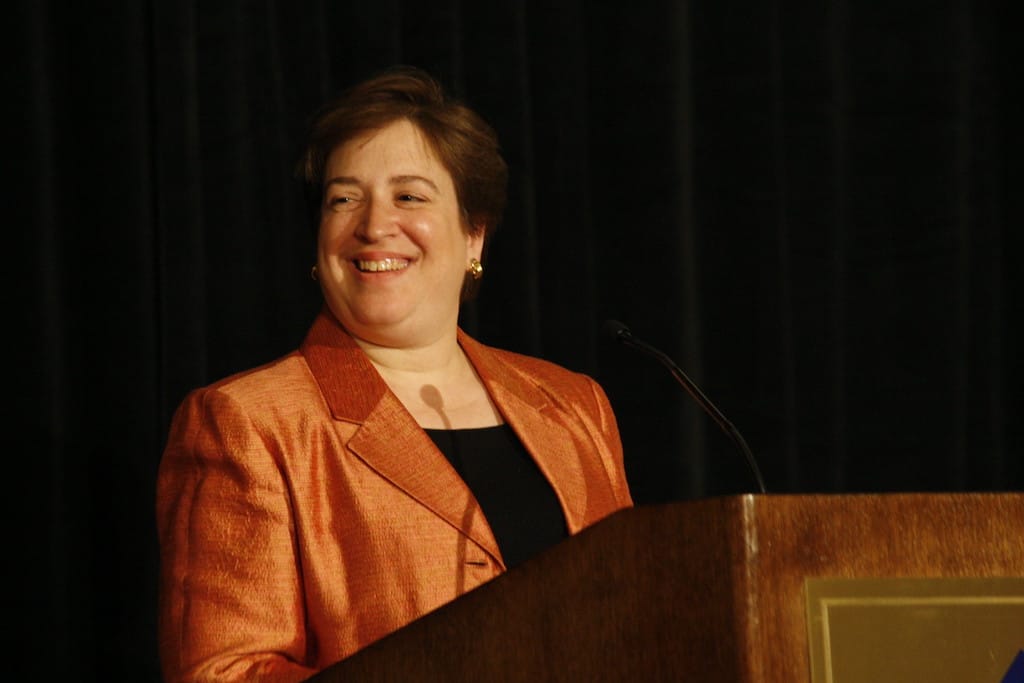Supreme Court Justices Express Caution About Entering Section 230 Debate
During oral arguments for Gonzalez v. Google, justices repeatedly voiced concerns about potential unintended consequences.

WASHINGTON, February 22, 2023 — Supreme Court justices expressed broad skepticism about removing liability protections for websites that automatically recommend user-generated content, marking a cautious start to a pair of long-awaited cases involving platform liability for terrorist content.
Gonzalez v. Google, argued on Tuesday, hinges on whether YouTube’s use of recommendation algorithms puts it outside the scope of Section 230, which generally provides platforms with immunity for third-party content.
A separate case involving terrorism and social media, Twitter v. Taamneh, was argued on Wednesday. Although the basic circumstances of the cases are similar — both brought against tech companies by the families of terrorist attack victims — the latter focuses on what constitutes “aiding and abetting” under the Anti-Terrorism Act.
Section 230 arguments central to Gonzalez
Section 230 protections are at the heart of Gonzalez. The provision, one of the few surviving components of the 1996 Communications Decency Act, is credited by many experts with facilitating the internet’s development and enabling its daily workings.
But the plaintiffs in Gonzalez argued that online platforms such as YouTube should be held accountable for actively promoting harmful content.
As oral arguments commenced, Justice Elena Kagan repeatedly raised concerns that weakening Section 230 protections could have a wider impact than intended. “Every time anybody looks at anything on the internet, there is an algorithm involved… everything involves ways of organizing and prioritizing material,” she said.
These organization methods are essential for making platforms user-friendly, argued Lisa Blatt, the attorney representing Google. “There are a billion hours of videos watched each day on YouTube, and 500 hours uploaded every minute,” she said.
Justice Brett Kavanaugh pointed to the inclusion of platforms that “pick, choose, analyze or digest content” in the statutory definition of covered entities. Claiming that YouTube forfeited Section 230 protections by using recommendation algorithms, Kavanaugh said, “would mean that the very thing that makes the website an interactive computer service also means that it loses the protection of 230.”
Eric Schnapper, the attorney representing the plaintiffs, argued that the provision in question was only applicable to software providers and YouTube did not qualify.
Justices concerned about unintended impacts of weakening Section 230
Despite Schnapper’s interpretation of the statute’s intent, Kavanaugh maintained his concerns about altering it. “It seems that you continually want to focus on the precise issue that was going on in 1996, but… to pull back now from the interpretation that’s been in place would create a lot of economic dislocation, would really crash the digital economy,” he said.
Weakening Section 230 could also open the door to “a world of lawsuits,” Kagan predicted. “Really, anytime you have content, you also have these presentational and prioritization choices that can be subject to suit,” she said, pointing to search engines and social media platforms as other services that could be impacted.
Deputy Solicitor General Malcolm Stewart, who primarily sided with the plaintiff, argued that even if such lawsuits were attempted, “they would not be suits that have much likelihood of prevailing.”
Justice Amy Coney Barrett noted that the text of Section 230 explicitly includes users of online platforms in addition to the platforms themselves. If the statute was changed, Barrett questioned, could individual users be held liable for any content that they liked, reposted or otherwise engaged with?
“That’s content you’ve created,” Schnapper replied.
‘Confusion’ about the case and the court’s proper role
Throughout the hearing, several justices expressed confusion at the complexities of the case.
During an extended definition of YouTube “thumbnails” — which Schnapper described as a “joint creation” because of the platform-provided URLs accompanying user-generated media — Justice Samuel Alito told Schnapper that the justice was “completely confused by whatever argument you’re making at the present time.”
At another point, Justice Ketanji Brown Jackson said she was “thoroughly confused” by the way that two different questions — whether Google could claim immunity under Section 230 and whether the company aided terrorism — were seemingly being conflated.
Just minutes later, after Stewart presented his argument on behalf of the Justice Department, Justice Clarence Thomas began his line of questioning with, “Well, I’m still confused.”
In addition to frequent references to confusion, multiple justices suggested that some aspects of the case might be better left to Congress.
“I don’t have to accept all of [Google’s] ‘the sky is falling’ stuff to accept… there is a lot of uncertainty about going the way you would have us go, in part just because of the difficulty of drawing lines in this area,” Kagan said. “Isn’t that something for Congress to do, not the court?”
Kavanaugh echoed those concerns, saying that the case would require “a very precise predictive judgment” and expressing uncertainty about whether the court could adequately consider the implications.
But Chief Justice John Roberts seemed equally hesitant to hand off the decision. “The amici suggest that if we wait for Congress to make that choice, the internet will be sunk,” he said.








